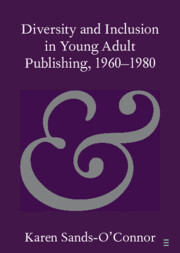Element contents
Diversity and Inclusion in Young Adult Publishing, 1960–1980
Published online by Cambridge University Press: 06 October 2022
Summary
- Type
- Element
- Information
- Online ISBN: 9781108900584Publisher: Cambridge University PressPrint publication: 27 October 2022
References
- 2
- Cited by



